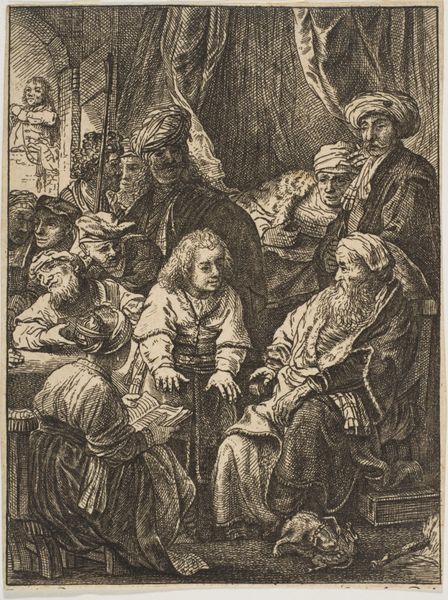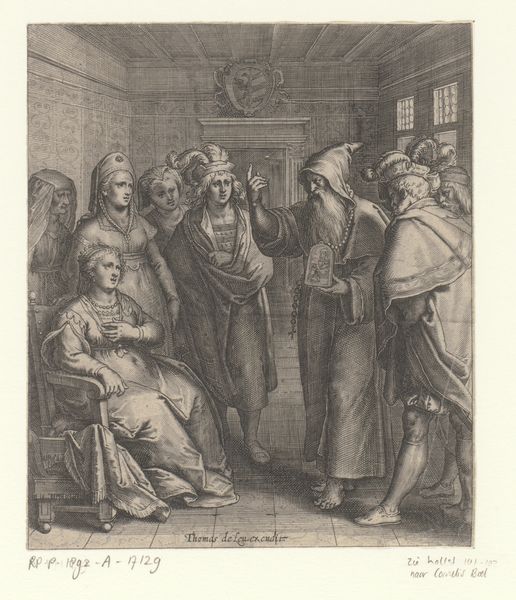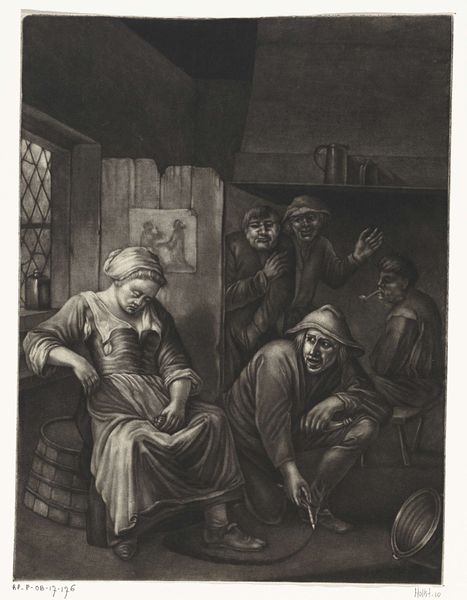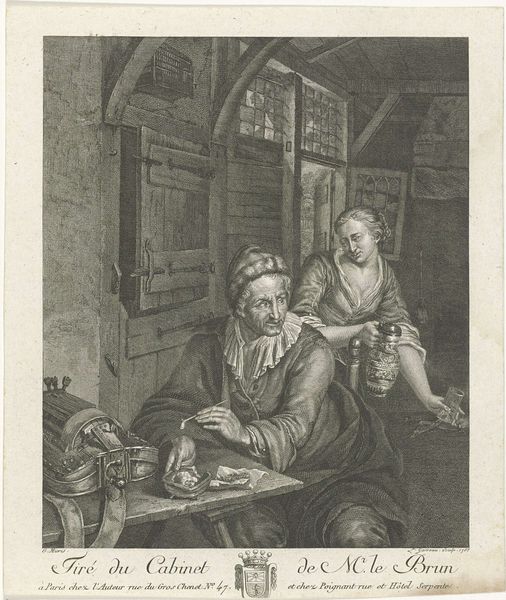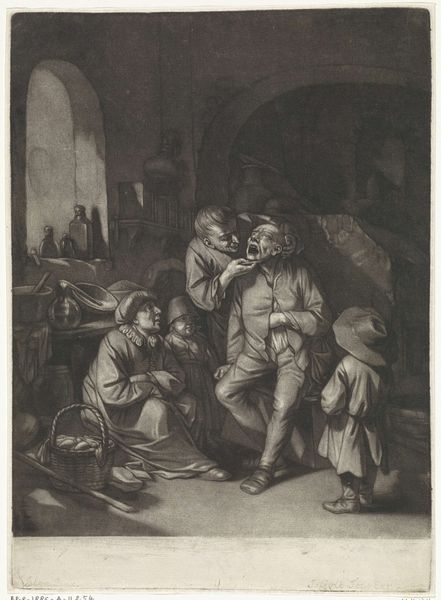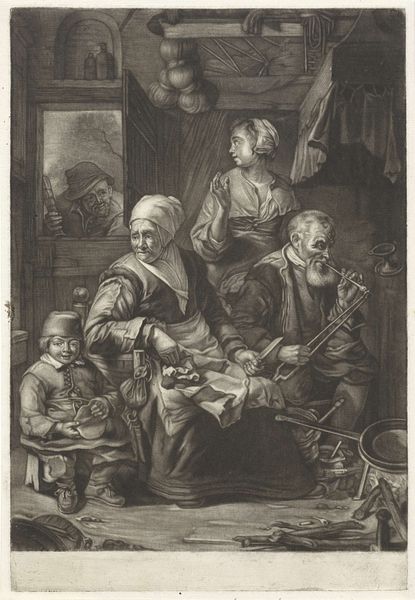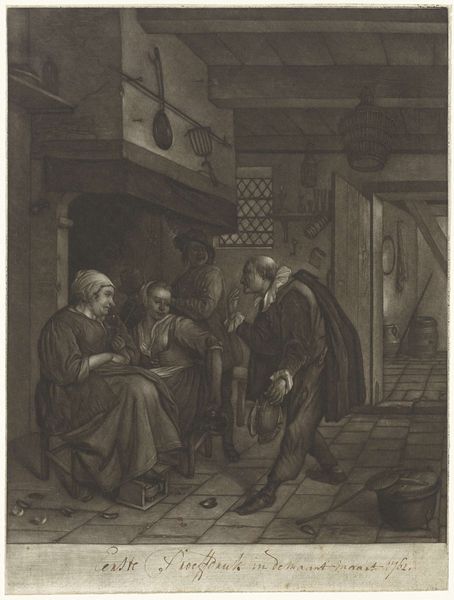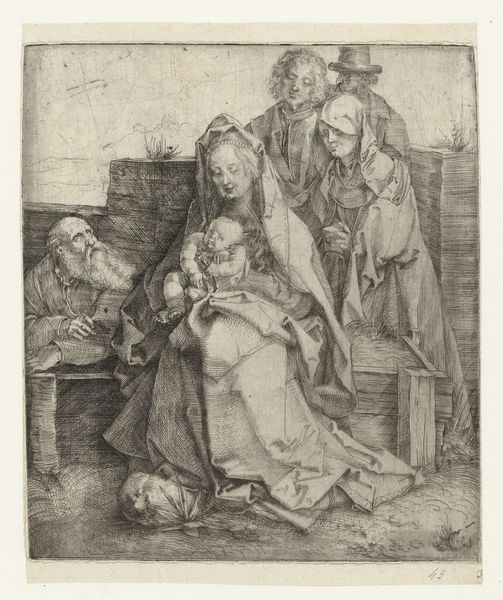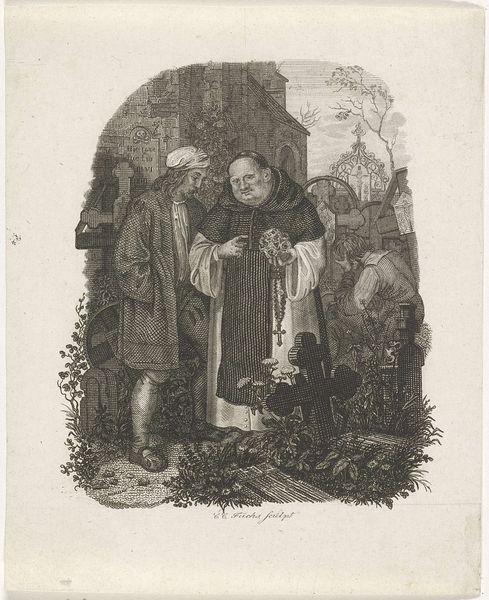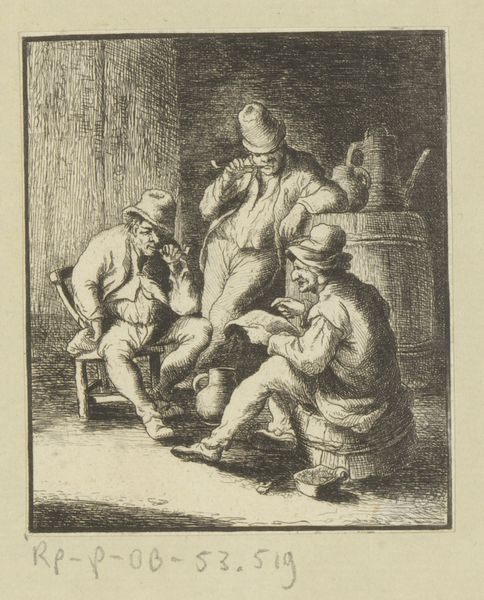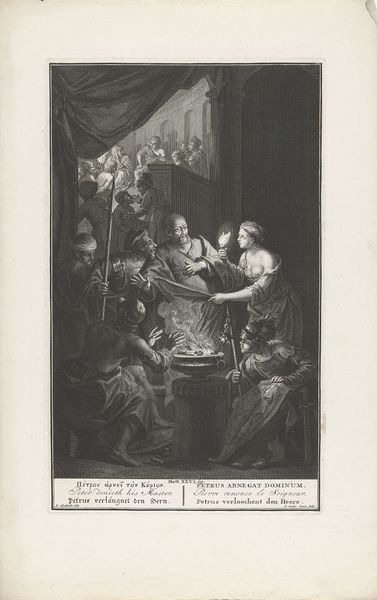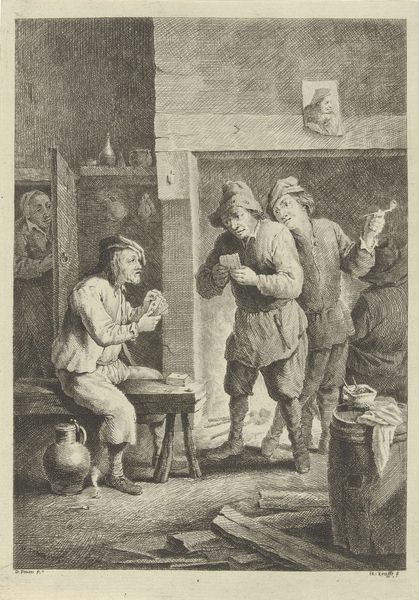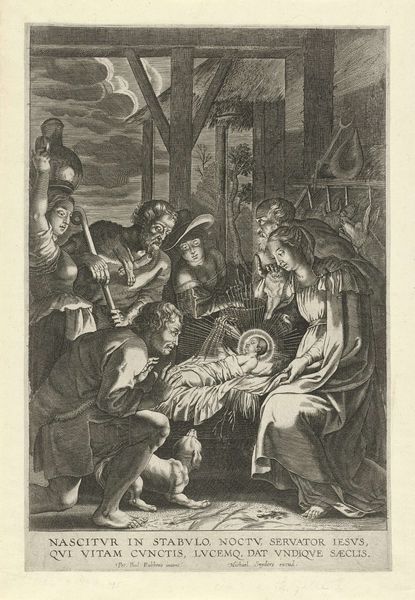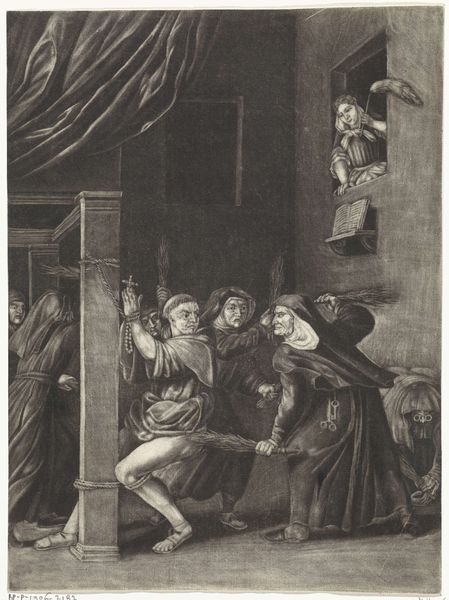
drawing, pen, charcoal
#
pencil drawn
#
drawing
#
baroque
#
charcoal drawing
#
pencil drawing
#
pen
#
genre-painting
#
charcoal
#
history-painting
#
watercolor
Dimensions: height 285 mm, width 192 mm
Copyright: Rijks Museum: Open Domain
Editor: We're looking at "Slapende vrouw en een man met een lijn kruit", or "Sleeping woman and a man with a line of powder" by Nicolaes van Haeften, made sometime between 1673 and 1715 using pen, charcoal, pencil and watercolor. The contrast in textures is striking – the smooth lines of the woman’s dress against the rough strokes detailing the conspirators lurking in the shadows. How do you interpret the composition of this drawing? Curator: Note how the composition is bisected, diagonally. The sleeping woman and foreground figure form a clear visual plane. Beyond this, we see a shadowed depth created by layering figures and utilizing a distinct hatching technique to create the impression of darkness. Consider the light; it isn’t diffuse but seems focused, perhaps to emphasize the conspiratorial activity while leaving the woman in a symbolic darkness, unaware. Does that initial assessment seem tenable? Editor: Absolutely. The sharp contrast draws immediate attention to the duality. The crisp pen strokes accentuate the central figures against the blurred background, really emphasizing that division you pointed out. The way the artist manages to render the varied surfaces with such subtle differences in shading and stroke direction, too. Curator: Precisely. The artist uses materiality strategically to underscore meaning. For instance, consider the textures further; the coarse charcoal against the finer lines… what feeling does that provoke? It’s as if Haeften deliberately used texture to suggest depth of character – or a lack thereof – in those actively participating in the ‘powder plot’ versus the woman oblivious. Editor: It's as if the medium itself is telling a story about the subject matter. I hadn’t considered that before. The starkness also really adds to the sinister feel of the scene, especially those peering figures, almost caught in the act. Curator: And in seeing that contrast, what’s communicated? Editor: By studying these elements together, I see the Baroque drama played out structurally within the artwork, highlighting tension through the play of light and shadow, smoothness, and roughness. Thank you for highlighting the formal elements at work.
Comments
No comments
Be the first to comment and join the conversation on the ultimate creative platform.
